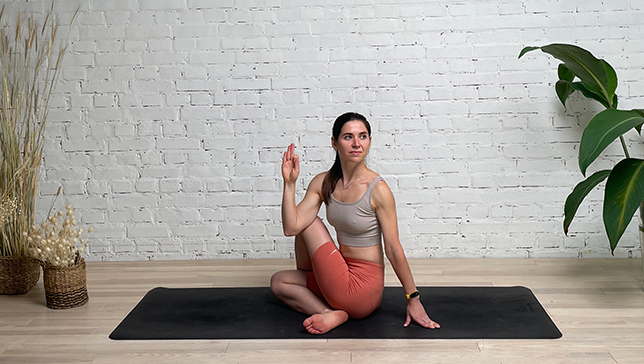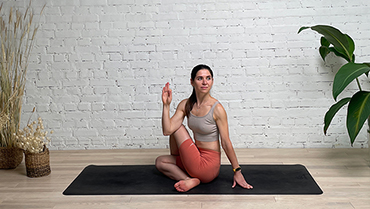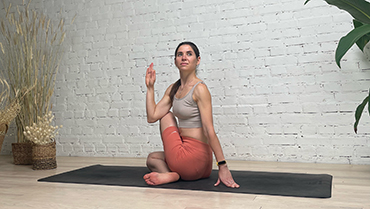Half Lord Of The Fishes Pose - Ardha Matsyendrasana

Contents
Half Lord of the Fishes Pose or Ardha Matsyendrasana, is named after the great yogi Matsyendranath who founded Hatha Yoga. The English name, Half Lord of the Fishes Pose, comes from the Sanskrit words ‘ardha’ = ‘half’, ‘matsya’ = ‘fish’, ‘eendra’ = ‘king’. This yoga pose has other variations and can be referred to as Half Spinal Twist Pose or Vakrasana (which means twist).
This yoga pose usually appears as a seated spinal twist with many variations and is one of the twelve basic yoga poses (asanas) in many systems of Hatha Yoga. In this yoga pose the spine gets its maximum twist at the upper back with the thighs placed over each other and with the support of the arms the torso gets its twist.
Pose Detail
- By Type: Flexibility Yoga Poses, Pregnancy Yoga Poses
- Difficulty: Intermediate
- Body Position: Seated Yoga Poses, Twist Yoga Poses
- By Benefit: Yoga Poses For Digestion, Yoga Poses For Periods, Yoga Poses For Sciatica, Yoga Poses For Weight Loss
Step-by-Step Instructions
Benefits and Contraindications
Stretched shoulders, hips, neck, and spine
Relief from fatigue, backache, and sciatica
Stimulated digestion and metabolism
Stimulated kidneys and liver
Relief form menstrual discomfort
Recent or chronic hip, back or shoulder injury or inflammation
Those with slip disc problems should avoid this pose completely.
Photo poses in different angles


Modifications, Props and Tips
- Sit on a cushion or a blanket to be able to ground through both sitting bones and lengthen your spine. Keeping the spine long is your main focus in this pose.
- Try the pose with your lower leg outstretched in front of you. This can help if you struggle to keep both sitting bones grounded.
- Hugging your knee with your hand, instead of hooking the elbow behind it, is a perfectly good option.
Frequently Asked Questions
Variations
- Full Spinal Twist Pose
- Marichi’s Pose A
- Half Lord Of The Fishes Pose Variation Hand Up
- Marichi’s Pose B
- Marichi’s Pose C
- Marichi’s Pose D
Top Preparatory Poses
- Cat Cow Pose
- Gate Pose
- Staff Pose
- Head-to-Knee Pose A
- One Leg Folded Forward Bend Pose